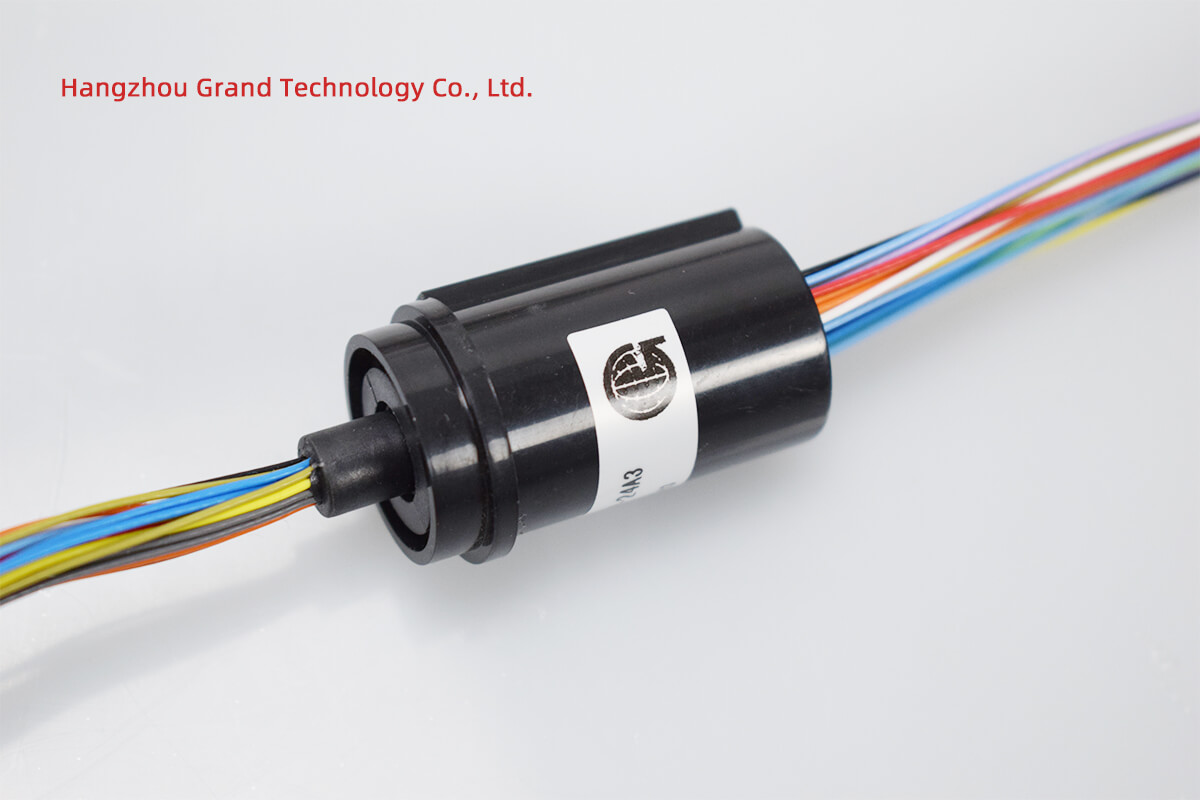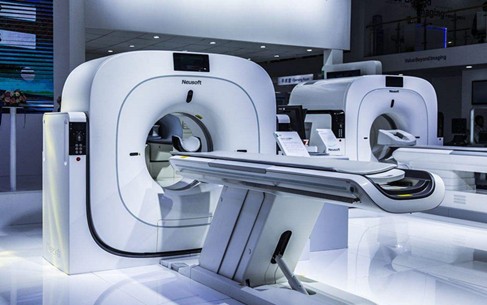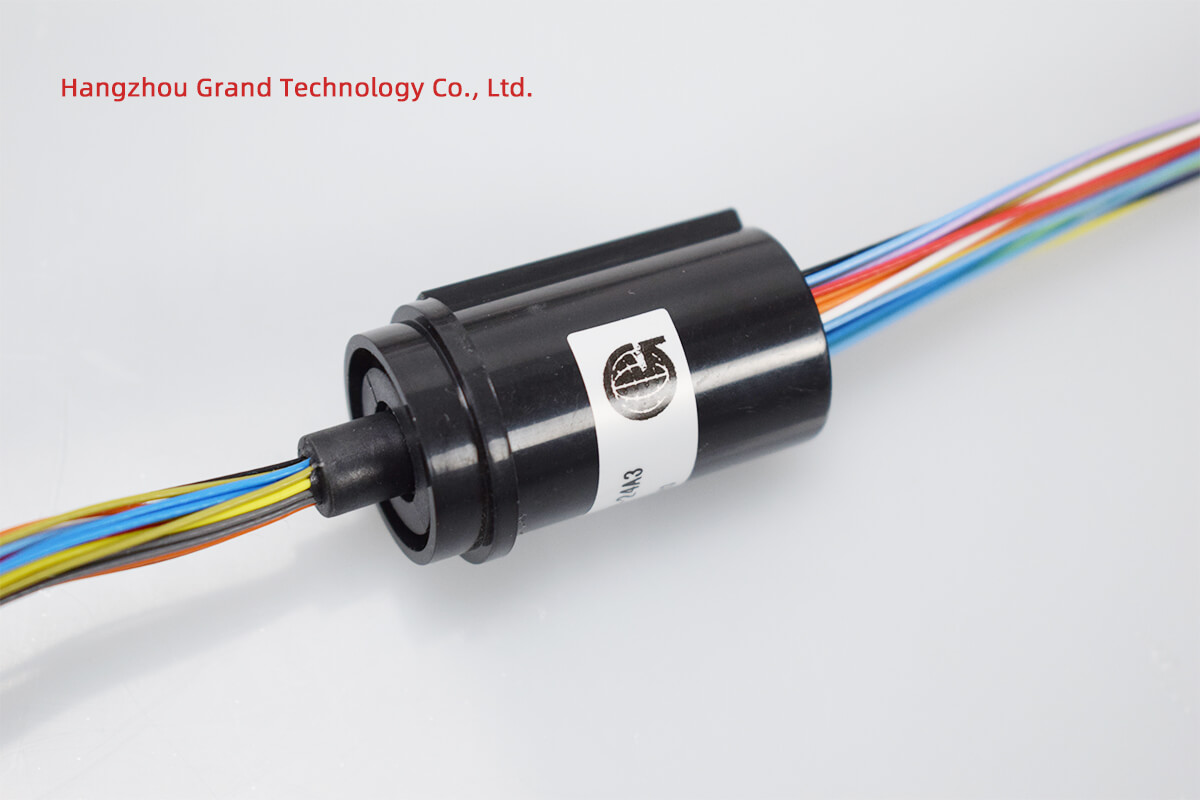In today’s fast-paced technological world, precision and efficiency are paramount. The need for accurate and reliable electromechanical devices capable of performing intricate and repetitive tasks has led to the development and widespread use of slip ring stepper motors. These advanced motors serve as a cornerstone in many industries, driving the progress and profitability of a vast range of applications.
Brief Overview of Slip Ring Stepper Motors
A slip ring stepper motor is a sophisticated amalgamation of two components: a stepper motor and a slip ring. The stepper motor, known for its preciseness in positioning and speed control, utilizes digital control inputs to achieve unparalleled accuracy. In contrast, slip rings are electromechanical devices that facilitate the unhindered transmission of power and electrical signals between stationary and rotating parts.
Merging these elements results in the slip ring stepper motor—an advanced electromechanical device affording flexibility, continuous rotation, and exact positioning without the limitations of conventional stepper motors.

Importance and Applications of Slip Ring Stepper Motors
Slip ring stepper motors have carved their niche in the realm of electromechanical devices due to the extensive range of benefits they offer. These motors not only streamline complex tasks but also provide precise control in various applications, contributing to enhanced efficiency, reduced errors, and increased productivity.
Owing to their superior precision and customizable nature, slip ring stepper motors have become indispensable in a multitude of industries and applications. These include robotics, industrial automation, camera lenses, CNC machines, and more. In essence, they are integral to modern technology and advance its capabilities by leaps and bounds.
In the following sections, we delve deeper into the intricacies of slip ring stepper motors, exploring their various types, mounting requirements, and troubleshooting tips to effectively harness their potential and optimize their functionality.
Understanding Slip Ring Stepper Motors
Understanding the design and functionality of slip ring stepper motors requires a thorough knowledge of their integral components: the stepper motor and the slip ring.
Explanation of What a Stepper Motor is
A stepper motor is a type of brushless DC motor whose rotation is divided into a distinct number of steps. Each of these steps corresponds to a fraction of a full rotation, and the motor advances by one step when it receives an electrical pulse. The output position of the motor is directly proportional to the input pulses it receives, enabling precise control over motor movement without needing a feedback mechanism. Stepper motors deliver high torque at low speeds and can hold their position even when at rest, making them crucial for a multitude of precision applications.
Description of What a Slip Ring is
A slip ring, on the other hand, is an electromechanical device designed to transmit electrical signals or power between stationary and rotating parts. It’s essentially composed of a concentric ring (the slip ring) and brushes that maintain an electrical connection with the ring while it rotates. In this way, the slip ring enables continuous electrical connections unaffected by the movement or rotation of connected parts.
Detailed Explanation of How Slip Ring Stepper Motors Work
In a slip ring stepper motor, the combination of a stepper motor’s precision and a slip ring’s rotational flexibility generates a superior electromechanical device. The stepper motor executes precise rotations, while the slip ring enables lossless transmission of power and signals between moving parts. Here’s how the process works:
- The stepper motor receives electrical pulses, each causing it to incrementally rotate to a precise angle.
- As the motor rotates, the connected slip ring also turns, maintaining the electrical connection with the stationary brushes.
- The brushes pick up or deliver electrical signals or power from/to the rotating slip ring.
This mechanism allows slip ring stepper motors to perform continuous rotation, flawlessly transmitting power and signals across the rotation. Throughout these operations, the stepper motors maintain high precision, making them essential for applications that demand accurate control and constant communication. In the following sections, we examine the various types of slip ring stepper motors and their unique characteristics.
Types of Slip Ring Stepper Motors
There are several types of slip ring stepper motors, catering to various applications based on individual requirements and design specifications. To gain a comprehensive understanding of these motors, we must delve into the main types, understanding their unique properties and weighing their advantages and disadvantages.
Various Types of Slip Ring Stepper Motors
The major types of slip ring stepper motors include:
- Variable Reluctance (VR) Slip Ring Stepper Motor
- Permanent Magnet (PM) Slip Ring Stepper Motor
- Hybrid Slip Ring Stepper Motor
Each of these slip ring stepper motor types offers exceptionality in design and function, making them suitable for specific applications.
Differences, Advantages, and Disadvantages of Each Type
- Variable Reluctance (VR) Slip Ring Stepper Motor
The Variable Reluctance slip ring stepper motor operates on the principle of magnetic reluctance, utilizing a soft-iron rotor with multiple teeth. The magnetic poles of the stator attract the rotor teeth, and the rotor moves to minimize the reluctance, aligning itself with the stator poles.
Advantages:
- Simple construction
- Rugged design
- Cost-effective
Disadvantages:
- Lower torque-to-weight ratio
- Poorer positional stability
- More prone to resonance issues
- Permanent Magnet (PM) Slip Ring Stepper Motor
The Permanent Magnet slip ring stepper motor uses a permanent magnet-embedded rotor to minimize its alignment with the stator magnetic poles. A commutation logic circuit switches the stator magnetic poles through specific sequences, producing incremental steps.
Advantages:
- Higher torque-to-weight ratio compared to VR stepper motors
- Better positional stability
- Smooth synchronous rotation
Disadvantages:
- Lower step resolution
- Less efficient for high-speed applications
- Hybrid Slip Ring Stepper Motor
As the name suggests, Hybrid slip ring stepper motors are a fusion of the Variable Reluctance and Permanent Magnet versions. They capitalize on the strengths of both types by incorporating the VR motor’s toothed rotor and the PM motor’s permanent magnet in a single device.
Advantages:
- Higher positional accuracy
- Higher torque-to-weight ratio
- Greater step resolution
Disadvantages:
- More complex design
- Higher cost
While the type of slip ring stepper motor best suited for specific applications depends on individual requirements and constraints, understanding the advantages and disadvantages of each type is crucial for informed decision-making. Users must carefully evaluate key factors, such as torque, speed, accuracy, and budget, to make the most suitable choice.
Slip Ring Stepper Motor Applications
Slip ring stepper motors have carved their niche in a vast array of industries due to their unique combination of precision, flexibility, and continuous rotation capabilities. Their diverse applications demonstrate their versatility and ability to address specific challenges. Let’s explore some of the most prevalent uses of slip ring stepper motors:
Key Application Areas
- Robotics
- Industrial Automation
- Camera Lenses and Gimbals
- CNC Machines
- Medical Equipment
Each of these application areas has unique requirements that slip ring stepper motors are perfectly equipped to fulfill.
Explanation of Why Slip Ring Stepper Motors are Used in These Applications
- Robotics
In the field of robotics, slip ring stepper motors are integral in controlling robotic arms and joints. Their high precision and continuous rotation capability make them an ideal choice for these systems, where maintaining accurate positioning while executing fluid, complex movements is a necessity.

- Industrial Automation
Industrial automation relies on consistency, accuracy, and efficiency, all of which slip ring stepper motors bring to the table. In conveyor systems, tool changers, and inspection equipment, these motors enhance control over speed, positioning, and communication between moving parts, contributing positively to increased productivity.
- Camera Lenses and Gimbals
In the world of photography and videography, precision is paramount. Slip ring stepper motors are used in camera lens autofocus systems and gimbals, providing seamless control over lens positioning while avoiding the need for physical connections that could impede rotation. Their ability to transmit power and data without interruption is vital in capturing the perfect shot.
- CNC Machines
Computer Numerical Control (CNC) machines require exact control and highly accurate movement; attributes exemplified by slip ring stepper motors. From milling to laser cutting and engraving, these motors enable precise positioning and innovative machine designs, enhancing their functionality and overall performance.
- Medical Equipment
In the medical field, accuracy and reliability are non-negotiable. Slip ring stepper motors are employed in devices such as surgical robots, x-ray machines, and lab automation equipment. The combination of high precision and lossless data/power transmission ensures that medical professionals can trust these motors and the devices they power to deliver vital life-saving services.

In summary, slip ring stepper motors are lauded for their continuous rotation, precise positioning, and unhindered data and power transmission capabilities, making them invaluable in industries and applications demanding such characteristics.
How to Choose the Right Slip Ring Stepper Motor
Choosing the right slip ring stepper motor can be a daunting task, given the variety of motors available and the specific requirements of individual applications. We’ve highlighted key considerations to help guide this decision-making process and ways to ensure optimal performance and lifespan.
Factors to Consider
- Torque: One of the primary performance characteristics of any motor is the torque or the rotational force it can produce. Evaluating your application’s torque needs helps you choose a motor capable of handling the loads involved.
- Speed: The speed at which the motor needs to operate is another crucial factor. Remember, the torque of stepper motors generally decreases as speed increases.
- Accuracy: The accuracy or positional precision required by the application helps you decide which type of slip ring stepper motor to choose. Hybrid motors typically offer the highest accuracy.
- Operating Conditions: Environmental factors such as temperature, humidity, dust, and vibration levels affect motor performance and lifespan. Consider these factors in your choice of motor and ensure that the selected motor can withstand your application’s specific conditions.
How Specific Applications Influence the Choice
The choice of a slip ring stepper motor is heavily influenced by its intended application. Factors such as the degree of precision required, the speed at which the motor will operate, and the environmental conditions under which it will work can all dictate which motor is best suited.
Focus on Correct Mounting to Optimize Performance and Lifespan
Mounting is an often overlooked but crucial part of ensuring the effective performance and longevity of a slip ring stepper motor. Improper mounting can result in misalignment, increased wear and tear, and decreased performance. Depending on the type of application and the motor chosen, different mounting techniques may be required.
For instance, in high-vibration environments, secure, vibration-resistant mounting techniques may be necessary to ensure the extended life of the motor. Similarly, for applications involving high-speed operation, a precise and rigid mount can help reduce possible misalignments and performance degradation over time.
As always, when selecting and implementing a slip ring stepper motor, it is important to consult with experts or manufacturers to ensure the chosen motor and mounting technique are appropriate for your specific application. Only then can the motor deliver the optimized performance and lifespan expected from such a crucial component of your application.
Slip Ring Mounting for Stepper Motors
Slip ring mounting is an intricate and essential aspect of installing stepper motors. Managing it correctly directly impacts the performance, safety, and longevity of the motor system. Let’s delve into how and why it becomes vital in stepper motor applications.
Importance and Relevance of Different Slip Ring Mounting Methods
Mounting methods for slip rings vary based on several factors tied to the motor’s application. A correct mounting methodology ensures minimal interruption in power and signal transmission, contributes to a more extended lifespan, and prevents performance degradation of the motor. Different mounting methods might include flange mounting, shaft mounting, or through-bore mounting, each best suited for different applications and motor types.
Factors Influencing the Choice of Mounting Method
When choosing a mounting method, several factors require careful consideration:
- Safety Considerations: The safety of operating personnel and the integrity of the equipment are paramount. The mounting method chosen should ensure both, and mitigate potential safety risks such as dislodgement of the motor during operation.
- Tool Requirements: Different slip ring mounting methods require different tools and expertise levels, which can affect the mounting choice based on the availability of resources.
- Application Specifications: The specific requirements of where and how the motor will be used can steer the mounting method decision. For example, space constraints could determine the use of a shaft-mounted over a flange-mounted system.
Overcoming Challenges Related to Slip Ring Mounting
There are a few common challenges faced during slip ring mounting which can be overcome by adhering to some practical tips:
- Misalignment: Ensure precision and accuracy during the mounting process to avoid any misalignment which could impact the performance of the motor in the long term.
- Proper Training: Invest time and resources in proper training for assembly staff to ensure the safe and correct installation of the motor and slip ring assembly.
- Maintenance Accessibility: Design the mounting in a way that maintenance of the slip ring and the motor is easy and feasible.
Best Maintenance Practices for Different Slip Ring Mounting Methods
Maintenance practices also differ depending upon the type of slip ring mounting used for the stepper motor:
- Regular Inspection: Regularly inspect slip rings and their mountings for signs of wear and tear, loosening, and corrosion.
- Proper Cleaning: Dust, dirt, and grime can inhibit the performance and lifespan of a slip ring. Regular cleaning with a dry and clean cloth is advisable.
- Avoid Overheating: Overheating can damage the slip ring, so it is beneficial to ensure the motor and slip ring are operating within specified temperature limits and stay well-ventilated.
- Ensure Electrical Integrity: Check wires and connections for any wear and tear. Loose connections could lead to noisy signal transmission and should be attended to promptly.
In summary, slip ring mounting for stepper motors demands attention to various factors to ensure optimal performance, efficiency, and longevity. Following best practices can prevent common challenges and ensure safe and efficient operation.
Troubleshooting Slip Ring Stepper Motors
Even with utmost care and maintenance, occasional issues with slip ring stepper motors may arise. Understanding the most common problems and potential solutions can lead to effective troubleshooting and prompt resumption of normal operations.
Common Issues and Their Solutions
- Mounting-Related Problems
Imprecise or insecure mounting could lead to vibration, noise, and poor performance of the motor. It could also adversely impact the alignment and electrical connectivity of the slip ring. The solution here is:
- Re-evaluate and readjust the Mounting: Revisit the mounting process, making sure that the motor and slip ring are correctly aligned and firmly secured according to the manufacturer’s instructions.
- Occasional Stalling of the Motor
This could result from the motor being overloaded or commanded to move too quickly.
- Check Load and Speed Settings: Ascertain that the motor’s load and speed settings are within the specified limits for the stepper motor in question. If necessary, incrementally reduce the speed or load to prevent stalling.
- Irregular Motor Movement
This could be a sign of lost steps and may be due to mechanical resistance or electrical issues.
- Check the System: Review the entire mechanical assembly, looking for sources of extra resistance. Simultaneously, check the electrical system particularly the driver circuits, to ensure they’re correctly set up and functioning.
When to Seek Professional Servicing
While minor issues can often be identified and addressed with a fundamental understanding of the system, certain problems can be more complex and may require the expertise of a professional. Here are situations where professional help might be necessary:
- Persistent Mechanical Issues: If re-mounting or adjusting load and speed settings do not resolve the problem, it might be time to consult a professional.
- Significant Electrical Problems: Electrical issues that go beyond step loss or basic wiring problems require expert attention.
- Major Component Failure: If you suspect that a major component of your stepper motor, such as the motor itself or the slip ring assembly, has failed, professional servicing is recommended.
Slip ring stepper motors play a crucial role in several industrial applications, where their safety and optimal performance are of utmost importance. While basic troubleshooting skills can help address some issues, do not hesitate to seek professional assistance when substantial problems arise, to avoid further complications and to ensure the sustainability and safety of the whole system.
Conclusion
In essence, slip ring stepper motors are an innovative blend of electrified components that can transform diverse application areas. Being cognizant of mounting techniques and upcoming trends offers valuable insights to enhance the practical utility of these devices. Whether you’re an enthusiast, a professional, or an innovator, the right knowledge is your stepping stone to effectively harness the potential of slip ring stepper motors.
See What We Can Do

